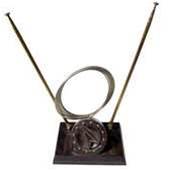The CSIRO has made plans to field test 10Gbps backhaul for its wireless-over-TV technology next year.

Targeted at the seven percent of Australians who would not receive national broadband network fibre, the so-called Ngara system offered connectivity via television spectrum channels.
Field trials began late last year in Smithton, Tasmania, where users received 12Mbps connectivity using a 7MHz channel at the 645.1MHz frequency (pdf).
Further trials were expected to take place in Armidale, NSW later this year, where the CSIRO would also introduce its Remote Immersive Diagnostic Examination (RIDES) ehealth system.
CSIRO ICT director Ian Oppermann said yesterday that the organisation hoped to aggregate several 7MHz channels to provide 100Mbps connectivity.
Telstra’s LTE network, expected by the end of the year, achieved between 100Mbps and 200Mbps in demonstrations.
The telco reported achieving an average 88.1Mbps downlink and 29.6Mbps uplink at the edges of a 75-kilometre cell, and 149Mbps down and 59Mbps up in laboratory demonstrations.
Speaking at the Broadband and Beyond 2011 conference, Oppermann said Ngara users in the “digital donut” outside of fibre-enabled towns would need reliable, ubiquitous, symmetric connections to keep up with their neighbours.
He revealed plans to begin commercialising Ngara this year, and to conduct field trials of 10Gbps microwave backhaul in early 2012.
According to the CSIRO, current wireless backhaul links that offered only 150Mbps across tens of kilometres would be “insufficient” for next generation broadband applications.



_(20).jpg&h=140&w=231&c=1&s=0)

_(22).jpg&h=140&w=231&c=1&s=0)



_(26).jpg&w=100&c=1&s=0)

 iTnews Executive Retreat - Security Leaders Edition
iTnews Executive Retreat - Security Leaders Edition












_(1).jpg&h=140&w=231&c=1&s=0)



